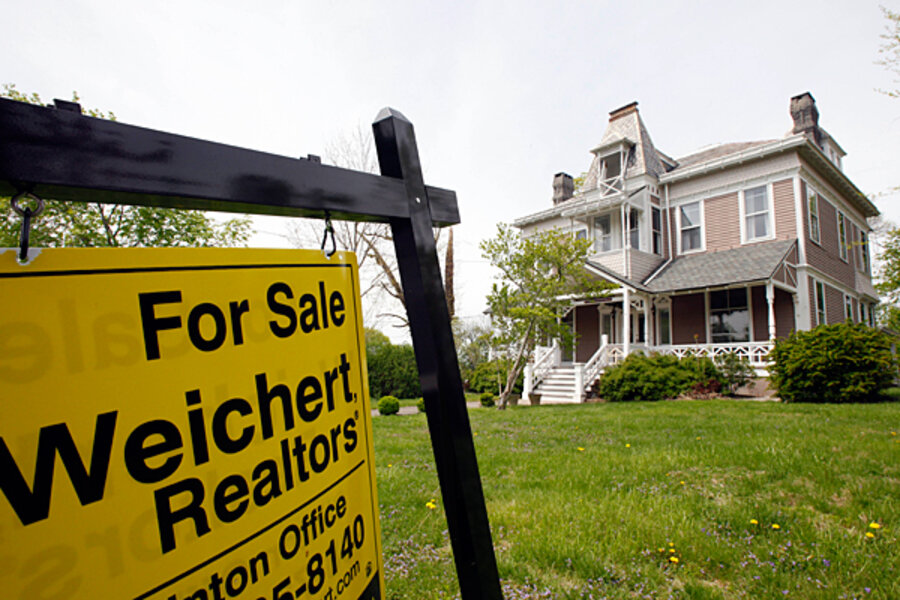US home sales fell in April, as tight credit hindered buyers
Loading...
The pace of home sales fell by nearly a percentage point in April, even as the inventory of properties for sale remains large.
One major obstacle to sales activity is tight credit conditions for potential buyers, said the National Association of Realtors (NAR), which released the sales numbers Thursday.
Other problems include high unemployment and weakness in home prices, which has made some home shoppers wary of buying when prices may be poised to drop further.
At the same time, the crosscurrents in the housing market include some positive forces. Foreclosure activity is declining in many regions, and an improving job market should boost demand for houses over time. Mortgage rates remain low.
“Given the great affordability conditions, job creation and pent-up demand, home sales should be stronger,” said Lawrence Yun, NAR's chief economist, in a statement accompanying the numbers. “Unnecessarily tight credit is continuing to restrain the market."
He also voiced concern about a stream of "low appraisals that result in contract cancellations.” Still, NAR predicts that sales activity will trend generally upward over the next year.
The median price for sales of previously owned homes in April was $163,700 – some 5 percent below the median price a year ago.
Sales volume came in at an annual rate of 5.05 million homes sold, down from a 5.80 million pace a year ago. Meanwhile, the inventory of homes for sale has risen, leaving a 9.2-month supply of homes on the market. In a more normal market, that figure might be six months.
Separately, the Mortgage Bankers Association said Thursday that the share of residential mortgages in serious delinquency fell to 8.1 percent of loans in the year's first quarter. This gauge, which measures loans that are 90 days past due or in foreclosure, stood at 8.6 percent in the prior quarter. It's down from 9.5 percent of loans a year ago.
The reports appear to underscore that the healing process for the housing market is a slow one.
Many Americans have high debt loads, and more than 1 in 4 mortgage holders have "negative equity," with a loan balance larger than their home's current value. The pace of foreclosures looks likely to remain historically high for a year or more.
Many households have shifted from ownership to renting, while others have "doubled up," such as when adult children live with parents.
Going forward, much will hinge on job conditions. If more people are finding work and incomes are rising, then forecasters generally see the housing market staging at least a gradual recovery. Recent job-creation numbers have been encouraging, but an indicator designed to forecast economic growth in the months ahead fell a bit in the latest monthly report, released Thursday.
“The economy has been growing moderately and delivering some new jobs," Ken Goldstein, an economist at the Conference Board, said in releasing the Leading Economic Index. "Economic growth will likely continue through the summer and fall, but the pace of economic activity may be choppy.”
Credit conditions are another important factor for housing. Lending standards were ultra easy in the period before 2007, when buyers could do deals with no money down. Now, NAR says that banks have become too tight, as often happens in the aftermath of a crisis.
Still, first-time buyers were able to purchase 36 percent of the homes sold in April, while investors (often planning to turn homes into rental properties) bought 20 percent of homes. The rest of sales went to repeat buyers.
In all, 37 percent of April sales involved "distressed" properties (such as foreclosures), down from 40 percent in March.





